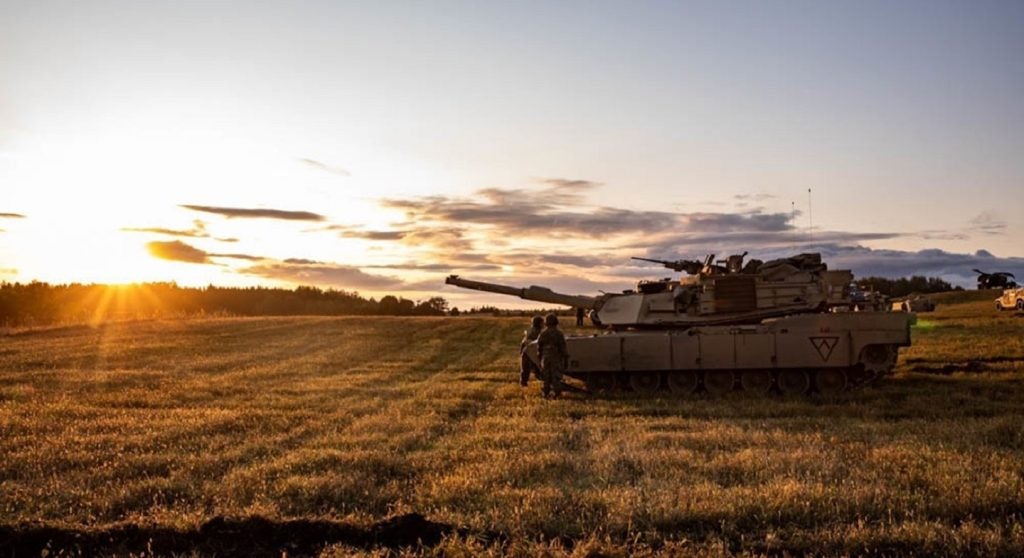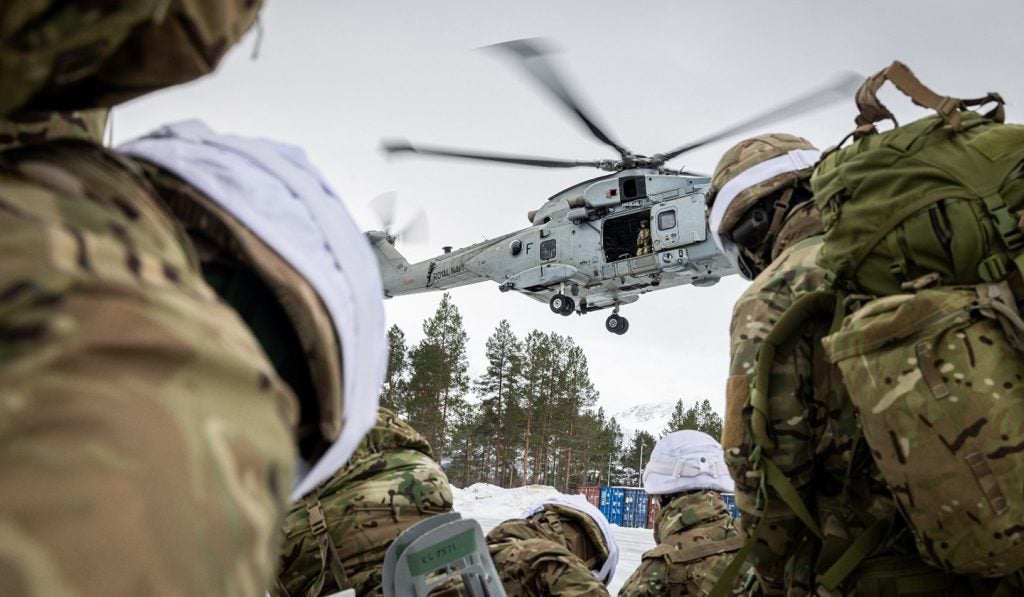

In evaluating the evolution of battlespace engineering at the strategic level, one can see the increasing permanence of forward operating bases (FOBs) as a staple across most Western militaries’ portfolios. This is especially true for the US military today, utilising such installations to maintain control over geographic pressure-points and enhance warfighting situational awareness far from major cities or developed infrastructure.
In the past, militaries had two primary positions for ground force deployment — sending troops out to the field with equipment they could carry on their person or vehicles, or keep them back in heavily fortified installations. This dichotomy resulted in soldiers or convoys travelling long distances to fight on the front lines of yesteryear’s conventional battlefields and then returning many miles to base for replenishment and resupply. In the contemporary period, the front line is not so clear. Today’s wars call for a different fighting style, and in turn a novel approach to manage forward deployed logistics with a focus on flexibility and adaptability, rather than fixed supply chains and permanent fortifications.
The challenge of supplying today’s FOBs
During Operation Iraqi Freedom, between 2003 and 2011, the US Armed Forces utilised almost 150 FOBs as secured outposts to support geographically displaced operations on a local and regional level throughout the country. In Afghanistan, between 2001 and 2012, FOBs were established to maintain tension on key enemy positions in remote areas, while keeping US soldiers within a relatively controlled and comfortable living environment.
FOBs can vary in size, composition and purpose; ranging from temporary airfields to in-situ hospitals, vehicle depots, or energy production facilities. What is consistent across most FOB installations is the need for power, water, shelter and waste management. At the outset of Afghanistan and Iraq operations in 2001, Coalition forces quickly realised the need for enhanced security measures to mitigate the vulnerability of vehicular convoy supply. Supplying FOBs became an increasingly dangerous task with roadside IED, VBIED and suicide attacks continuing to plague Coalition forces’ operations as the routes became more regular and insurgents’ tactics improved.
See Also:
In the fight against terrorism, defence and security agencies are turning to behaviour prediction software.
How well do you really know your competitors?
Access the most comprehensive Company Profiles on the market, powered by GlobalData. Save hours of research. Gain competitive edge.

Thank you!
Your download email will arrive shortly
Not ready to buy yet? Download a free sample
We are confident about the unique quality of our Company Profiles. However, we want you to make the most beneficial decision for your business, so we offer a free sample that you can download by submitting the below form
By GlobalDataKeeping soldiers deployed closer to their operating area in FOBs while reducing frequency and exposure of vehicles to the dangers of asymmetric warfare is not only a life-saver, but also a cash saver. Shorter commute times to combat zones reduce fuel expenses, lower the necessary communications range, and provide a faster response time for extraction teams or haul-out from a hot zone to a medical centre. In such situations, seconds save lives. However, simply erecting some buildings and moving personnel inside is insufficient. An FOB has significant logistical and operational requirements which must be fulfilled in order to establish and maintain operational fidelity and personnel security.
In order to limit convoy supply runs and thereby shorten the amount of time vehicles and personnel are exposed to roadside or airborne threats, the DoD is aggressively pursuing new technologies to make FOBs more self-contained and self-reliant. This in turn allows FOBs to be deployed in more varied terrain and geography. The ideal future FOB paradigm would include rapidly deployable infrastructure and equipment which can be erected into a secure position in a remote location requiring minimal resupply from outside sources to maintain self-sufficiency. "DOD Lab Day" in May 2015 focused on this very topic, evaluating in particular power generation, water creation and waste management options for future FOBs
Nanogrids: the future of power generation
A chief component of emerging FOB technology is nanogrids. The concept of a microgrid is well established – a small power grid which can be operated independently of the main grid and maintains its own local power generation. Typically these systems power a town or village.
A nanogrid goes further, restricting the self-contained circuit to just a building, or perhaps a couple of buildings. An example well-suited to a desert theatre is a solar or wind powered grid. Specific advantages of this technology are ease of installation, eliminated requirement for long distance cable borne electricity transmission, absence of petrol by convoy, and diversification of power generation away from single facilities which can become targets. The core benefit of this technology for FOBs is flexibility and self-sustainability, as it removes significant portions of the supply chain from the equation.
Yet pertinent issues need to be resolved before nanogrids can be fully incorporated to the FOB paradigm, particularly ensuring consistency of supply and ease of maintenance for the systems. Once this is accomplished, the nanogrid industry is expected to grow into a $59.5bn global market by 2023.
Managing waste in sensitive locales
The DoD’s Strategic Environmental Research and Development Program (SERDP) is focusing on solid waste and wastewater management. FOBs are often isolated, and ready access to water is not necessarily guaranteed – particularly if the water source is shared with a local population. Currently, there is no standardised method to reduce water waste, let alone manage waste water or solid waste such as kitchen rubbish.
SERDP is proposing the use of microbial fuel cells and bioreactors to both purify the waste water and use the impurities extracted from it to generate power, perhaps for the aforementioned nanogrids. In addition, SERDP proposes taking solid waste and compressing it in a portable system rather than burning it or using landfills, which can upset the local population and marginalise otherwise accepting or welcoming communities into opposition.
Michigan State University estimates that approximately 150 litres of water per soldier per day is needed for the purposes of washing, cooking and general cleaning, indicating that waste water control systems could be instrumental in making FOBs increasingly self-sufficient.
Solving the potable water problem with atmospheric water generation
Also in line with water management is the constant need for enormous quantities of potable water in locations which are often disconnected from water pipelines and where remote natural water sources are tainted or otherwise undrinkable. Throughout recent combat environments in Iraq and Afghanistan, numerous remote FOBs were supplied by bottled water, with soldiers drinking, shaving, and showering from the bottle, or worse — resorting to wet wipes to conserve the precious commodity in 45°+ heat.
These varied applications for bottle water use resulted in significant water waste from spillage of the bottles along with solid waste pollution problems arising from the sheer quantity of empty bottles. Regular resupply of new bottles and additional materials kept vehicles out on the streets, exposing convoys to exacerbated risks while travelling over mined mountain roads or VBIED plagued desert expressways.
As a remedy to the challenge of increased convoy risk exposure driven by the constant need to resupply consumables such as water, the DoD is seeking mass-deployment of atmospheric water generation (AWG) technology for FOBs. AWG systems produce water by extraction and condensation of atmospheric water. This can be done in a variety of ways, but one primary method is bonding desiccant compounds to the water to condense it and then filtering these compounds out.
Army-technology.com lists the largest army bases in the world, ranked by population.
Such systems may work fine in the jungle or the humid suburbs of London or Washington on a hot summer’s day, but what about the zero-humidity desert? While this technology is not new and some countries utilise these systems at city-wide levels, technology start-ups such as Israel’s Water-Gen have managed to expand the scope of such systems and make them transportable for FOB incorporation.
Aqua Science is another company working with the US military to produce trailer-sized emergency water stations capable of producing enough water for 5,200 soldiers to drink each day. Currently, these stations are powered by internal generators, but there is a push to link the installations to a nanogrid system. When combined, such technology could allow the erection of FOBs virtually anywhere without a dependence on water lines or bottle resupply.
Bringing the amenities of home to the field
There are soft benefits to FOBs as well. Unlike their grandfathers fighting in Vietnam, today’s American soldiers spend less of their down-time sleeping exposed in the field, and instead checking emails from the computer lab or pumping iron in the FOB gym, behind a secure perimeter.
Bringing amenities to soldiers in forward-deployed areas reinforces a positive psychological sentiment. With fibre-optic or satellite broadband, family does not feel so far away, Xbox clans won’t miss their best shooter, and the Nespresso can still turn out perfect cups. In this capacity, FOBs not only serve as tactical staging areas for forward operations, but also as a home away from home, enhancing the quality of life for today’s forward deployed soldier.
Although there is still no magic technology for eliminating all risks, the aforementioned priority development projects can be synthesised to create self-sufficient ecosystems that incorporate amenities such as television and internet in remote locations as well as reduce external dangers and internal materiel shortages to keep soldiers healthier, happier, and safer. Even something as simple as a Skype call, which any civilian can do with their smartphone in seconds, has a very positive impact on morale in remote locations.
Simultaneously, removing the need to ration water will prevent dehydration and heat related trauma in the field. Combined with the reduced risk of exposed convoy resupply and the environmental benefits of waste management and sustainable energy, these emerging technologies will make a positive impact on the way FOBs are designed, managed and used, allowing benefits to be reaped while maintaining aggressive forward positioning and an upbeat operational tempo.







